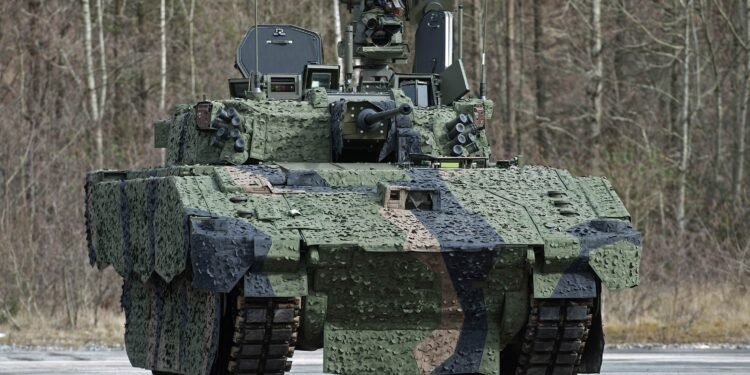
General Dynamics UK has delivered new thermal sleeves for the British Army’s Ajax infantry fighting vehicle gun barrel.
The system has been procured and delivered within eight months and will be fitted to the vehicle’s CT40 cannons for enhanced fire accuracy and lifespan.
Industry partners Nexter Systems and CTA International developed the system, while General Dynamics UK modified it.
“The CTAI CT40 Thermal Sleeve is an off-the-shelf solution designed for the CT40 cannon’s static barrel bend, an integral part of the weapon system which is now being incorporated to further enhance the firing accuracy and improve the life span of the barrel,” Armoured Cavalry Programme Director Colonel Jamie Hayward said.
Thermal Sleeve
A thermal sleeve regulates barrel temperature, preventing thermal expansion and distortion caused by continuous firing.
Mounted on the weapon barrel support, it allows free recoil inside a static sheath while maintaining the system’s structural integrity.
“The integration of the Thermal Sleeve not only enhances the lethality of the highly accurate Ajax CT40 cannon but also the signature management of this world class reconnaissance capability,” General Dynamics Land Systems – UK Operations VP Scott Milne explained.
“Delivery of this rapid capability spiral has benefitted from strong collaboration across the growing Ajax Enterprise with CTAI acting as a trusted partner ensuring that Ajax is on track to exceed CGS’ challenge of doubling British Army fighting power by 2027.”
Ajax Program
The Ajax program, valued at 5.5 billion pounds ($7.12 billion), has faced an eight-year delay due to design issues. Initial deliveries are expected in 2025, with full operational capability in 2028.
It is part of a 41-billion pound ($53-billion) investment in British Army equipment over the next decade.
The vehicle features open digital architecture, allowing the integration of future technologies.
Capabilities being planned for integration with the platform include active and passive protection systems, airburst cannon rounds, and harnessing of artificial intelligence for the evolution of platform sensors.










